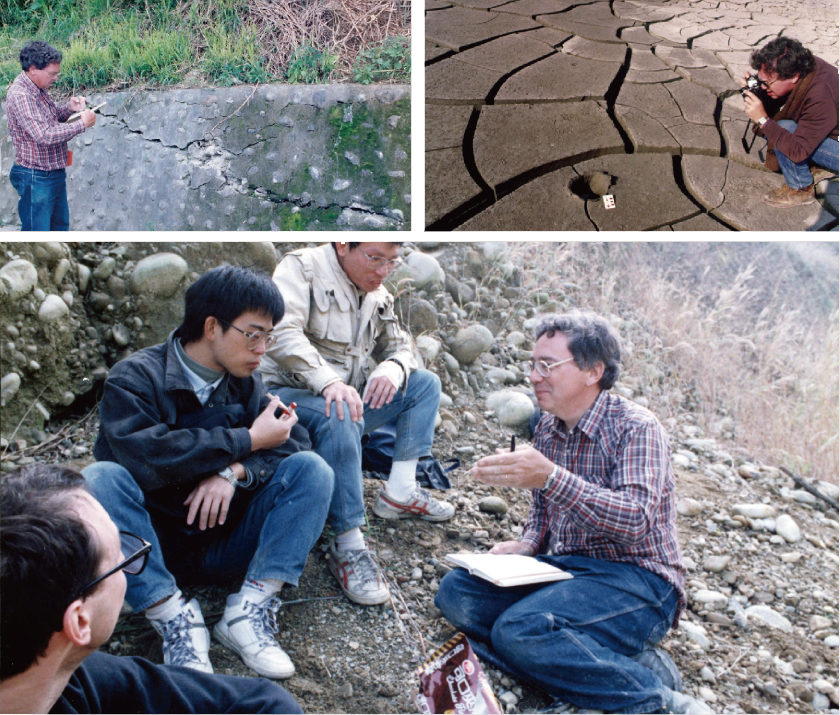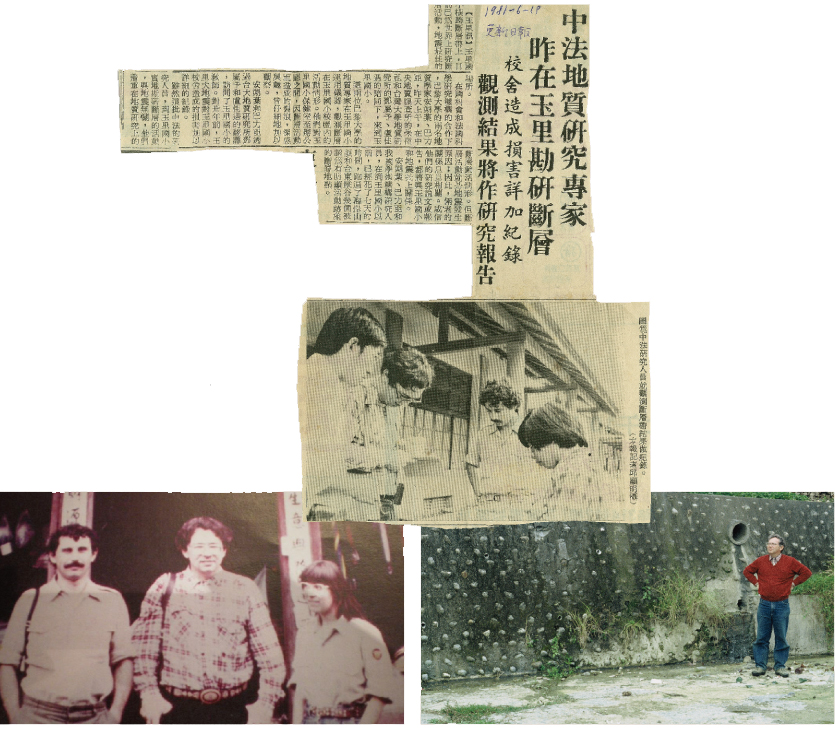|
三個年代


在台灣地質工作旅程的前幾年,不論是海邊、高山,安朔葉教授的足跡已經是踏遍全島;同時間對於台灣的地體構造及板塊碰撞演化,也提出了幾個經典的繪圖及論文。從這些經驗中,他開始特別針對幾個地區從事更進一步的深入分析。自80年代末至90年代末約莫十年中,安教授也積極邀請法國其他學者共同參加台法科學合作研究,並指定學生(包括台灣及法國)以這些地區作為論文研究題材。例如台灣西部前陸盆地地區(包括台南月世界泥岩區、八卦大肚台地、苗栗火焰山、高雄石灰岩地區等)、池上斷層(這個在花東縱谷中快速潛移的活斷層,將在隨後發光發熱,成為世界有名的斷層)、中央山脈地區(包括太魯閣、大禹嶺、中橫、南橫、花蓮蛇紋石礦場、梨山斷層、潮州斷層等)。而在90年代末發生的921集集大地震,則是台灣百年來最大的地震災害。安教授也在第一時間整理裝備緊急赴台,參加了地震破裂車籠埔斷層的地質調查工作。 After about a decade of work in Taiwan, Professor Angelier had published a few historical scientific papers with beautiful, vivid illustrations about the tectonics and deformation associated with mountain building in Taiwan. During the following years in the 1990s, he had made a great deal of efforts on several specific areas, such as the Western Foreland, the Chihshang Fault (in eastern Taiwan) and the Central Range, where Professor Angelier also had put a few students, including Taiwanese and French, as their study areas of thesis work. Near the end of the 1990s, there occurred the Chi-Chi earthquake, a most devastated seismic events in the century. At this critical moment, Professor Angelier had felt the emergence and the needs of people from Taiwan. He went immediately from France to join the geological investigations of the Chelungpu Fault. |


